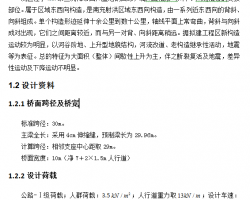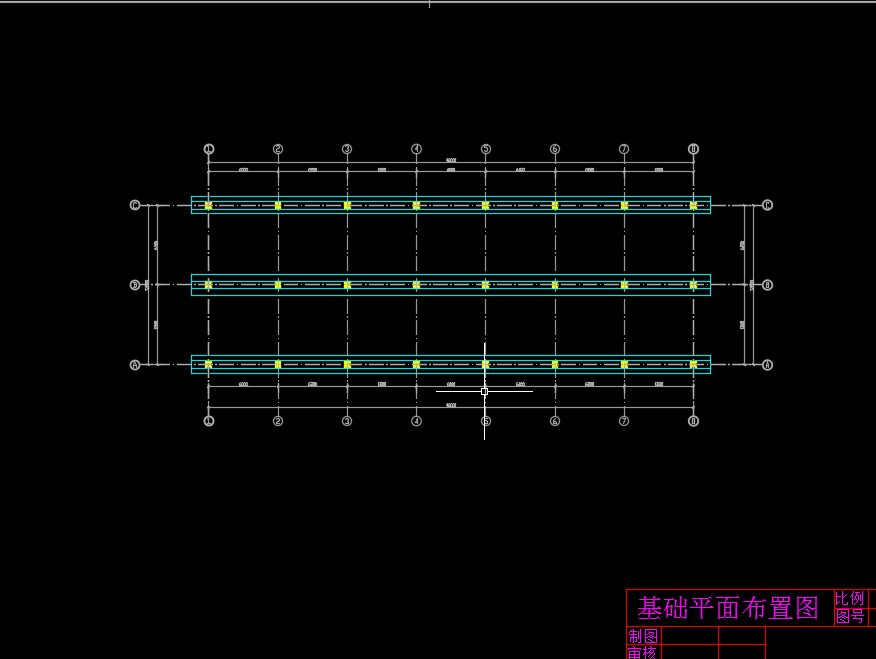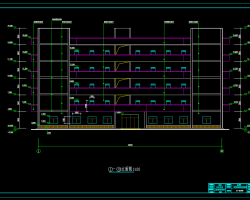2016年1月6号
原文:
原文:
Building types and design
A building is closely bound up with people,for it provides with the necessary space to work and live in .
As classified by their use ,buildings are mainly of two types :industrial buildings and civil buildings .industrial buildings are used by various factories or industrial production while civil buildings are those that are used by people for dwelling ,employment ,education and other social activities .
Industrial buildings are factory buildings that are available for processing and manufacturing of various kinds, in such fields as the mining industry, the metallurgical industry, machine building, the chemical industry and the textile industry. Factory buildings can be classified into two type’s single-story ones and multi-story ones .the construction of industrial buildings is the same as that of civil buildings .however, industrial and civil buildings differ in the materials used and in the way they are used.
Civil buildings are divided into two broad categories: residential buildings and public buildings .residential buildings should suit family life .each flat should consist of at least three necessary rooms : a living room ,a kitchen and a toilet .public buildings can be used in politics ,cultural activities ,administration work and other services ,such as schools, office buildings, parks ,hospitals ,shops ,stations ,theatres ,gymnasiums ,hotels ,exhibition halls ,bath pools ,and so on .all of them have different functions ,which in turn require different design types as well.
Housing is the living quarters for human beings .the basic function of housing is to provide shelter from the elements ,but people today require much more that of their housing .a family moving into a new neighborhood will to know if the available housing meets its standards of safety ,health ,and comfort .a family will also ask how near the housing is to grain shops ,food markets ,schools ,stores ,the library ,a movie theater ,and the community center .
In the mid-1960’s a most important value in housing was sufficient space both inside and out .a majority of families preferred single-family homes on about half an acre of land ,which would provide space for spare-time activities .in highly industrialized countries ,many families preferred to live as far out as possible from the center of a metropolitan area ,even if the wage earners had to travel some distance to their work .quite a large number of families preferred country housing to suburban housing because their chief aim was to get far away from noise ,crowding ,and confusion .the accessibility of public transportation had ceased to be a decisive factor in housing because most workers drove their cars to work .people we’re chiefly interested in the arrangement and size of rooms and the number of bedrooms .
Before any of the building can begin, plans have to be drawn to show what the building will be like, the exact place in which it is to go and how everything is to be done.
An important point in building design is the layout of rooms ,which should provide the greatest possible convenience in relation to the purposes for which they are intended .in a dwelling house ,the layout may be considered under three categories : “day”, “night” ,and “services” .attention must be paid to the provision of easy communication between these areas .the “day “rooms generally include a dining-room ,sitting-room and kitchen ,but other rooms ,such as a study ,may be added ,and there may be a hall .the living-room ,which is generally the largest ,often serves as a dining-room ,too ,or the kitchen may have a dining alcove .the “night “rooms consist of the bedrooms .the “services “comprise the kitchen ,bathrooms ,larder ,and water-closets .the kitchen and larder connect the services with the day rooms .
It is also essential to consider the question of outlook from the various rooms ,and those most in use should preferably face south as possible .it is ,however ,often very difficult to meet the optimum requirements ,both on account of the surroundings and the location of the roads .in resolving these complex problems ,it is also necessary to follow the local town-planning regulations which are concerned with public amenities ,density of population ,height of buildings ,proportion of green space to dwellings ,building lines ,the general appearance of new properties in relation to the neighborhood ,and so on .
There is little standardization in industrial buildings although such buildings still need to comply with local town-planning regulations .the modern trend is towards light ,airy factory buildings .generally of reinforced concrete or metal construction ,a factory can be given a “shed ”type ridge roof ,incorporating windows facing north so as to give evenly distributed natural lighting without sun-glare .Assessment of natural radioactivity levels and radiation hazards due to cement industry Abstract
The cement industry is considered as one of the basic industries that plays an important role in the national economy of developing countries. Activity concentrations of 226Ra, 232Th and 40K in Assist cement and other local cement types from different Egyptian factories has been measured by using γ-ray spectrometry. From the measured γ-ray spectra, specific activities were determined. The measured activity concentrations for these natural radionuclide were compared with the reported data for other countries. The average values obtained for 226Ra, 232Th and 40K activity concentration in different types of cement are lower than the corresponding global values reported in UNSCEAR publications. The manufacturing operation reduces the radiation hazard parameters. Cement does not pose a significant radiological hazard when used for construction of buildings.
1. Introduction
The need for cement is so great. That it considered a basic industry. Workers exposed to cement or its raw materials for a long time especially in mines and at manufacturing sites as well as people, that spend about 80% of their time inside offices and homes (Mullah et al., 1986; Parades et al., 1987) result in exposure to cement or its raw materials being necessary reality so we should know the radioactivity for cement and its raw material. There are many types of cements according to the chemical composition and hydraulic properties for each one. Portland cement is the most prevalent one. The contents of 226Ra, 232Th and 40K in raw and processed materials can vary considerably depending on their geological source and geochemical characteristics. Thus, the knowledge of radioactivity in these materials is important to estimate the radiological hazards on human health.
The radiological impact from the natural radioactivity is due to radiation exposure of the body by gamma-rays and irradiation of lung tissues from inhalation of radon and its progeny (Papastefanou et al., 1988). From the natural risk point of view, it is necessary to know the dose limits of public exposure and to measure the natural environmental radiation level provided by ground, air, water, foods, building interiors, etc., to estimate human exposure to natural radiation sources (UNSCEAR, 1988). Low level gamma-ray spectrometry is suitable for both qualitative and quantitative determinations of gamma-ray-emitting nuclides in the environment (IAEA, 1989).
The concentration of radio-elements in building materials and its components are important in assessing population exposures, as most individuals spend 80% of their time indoors. The average indoor absorbed dose rate in air from terrestrial sources of radioactivity is estimated to be 70 nay h?. Indoors elevated external dose rates may arise from high activities of radionuclide in building materials (Zikovsky and Kennedy, 1992). Great attention has been paid to determining radionuclide concentrations in building materials in many countries (Armani and That. 2001; Rizzo et al., 2001; Kumar et al., 2003; Tortoise et al., 2003). But information about the radioactivity of these materials in Egypt is limited. Knowledge of the occurrence and concentration of natural radioactivity in such important materials is essential for checking its quality in general and knowing its effect on the environment surrounding the cement producing factories in particular.
Because of the global demand for cement as a building material, the present study aims to:
(1) Assess natural radioactivity (226Ra, 232Th and 40K) in raw and final products used in the Assist cement factory and other local factories in Egypt.
(2) Calculate the radiological parameters (radium equivalent activity Read, level index I γ r, external hazard index Hex and absorbed dose rate) which is related to the external γ-dose rate.
The results of concentration levels and radiation equivalent activities are compared with similar studies carried out in other countries.
2. Experimental technique
2.1. Sampling and sample preparation
Fifty seven samples of raw materials and final products used in the Assist cement factories were collected for investigation. Twenty five samples of raw materials were taken from (Limestone, Clay, Slag, Iron oxide, gypsum) which are all the raw material used in cement industry, 20 samples of final products were taken from Assist cement (Portland, El-Mohandas, White, and Soleplate resistant cement (S.R.C)). For comparison with products from other factories, 8 samples were taken from the ordinary Portland cement from (Helena, Quean, El-kalmia, and Torah) and 4 samples were taken of white cement (Sinai and Helena). Each sample, about 1-kg in weight was washed in distilled water and dried in an oven at about 110 °C to ensure that moisture is completely removed; the samples were crushed, homogenized, and sieved through a 200 mesh, which is the optimum size to be enriched in heavy minerals. Weighted samples were placed in a polyethylene beaker, of 350-cm3 volume. The beakers were completely sealed for 4 weeks to reach secular equilibrium where the rate of decay of the radon daughters becomes equal to that of the parent. This step is necessary to ensure that radon gas is confined within the volume and the daughters will also remain in the sample.
2.2. Instrumentation and calibration
Activity measurements were performed by gamma ray spectrometry, employing a 3″×3″scintillation detector. The hermetically sealed assembly with a Nay crystal is coupled to a PC-MCA (Canberra Accuses). Resolution 7.5% specified at the 662 kef peaks of 137Cs. To reduce gamma ray background a cylindrical lead shield (100 mm thick) with a fixed bottom and movable cover shielded the detector. The lead shield contained an inner concentric cylinder of copper (0.3 mm thick) to absorb lead X-rays. In order to determine the background distribution in the environment around the detector, an empty sealed beaker was counted in the same manner and in the same geometry as the samples. The measurement time of activity or background was 43 200 s. The background spectra were used to correct the net peak area of gamma rays of measured isotopes. A dedicated software program (Genie 2000 from Canberra) analyzed each measured γ-ray spectrum.
3. Conclusion
The natural radionuclide 226Ra, 232Th and 40K were measured for raw materials and final products used in the Assist cement factory in Upper Egypt and compared with the results in other countries. The activity concentration of 40K is lower than all corresponding values in other countries. The activity concentration of 226Ra and 232Th for all measured samples of Portland cement are comparable with the corresponding values of other countries. The obtained results show that the averages of radiation hazard parameters for Assist cement factory are lower than the acceptable level 370 By kg?1 for radium equivalent Rae, 1 for level index I γ r, the external hazard index Hex ≤1 and 59 (nay h?1) for absorbed dose rate. The manufacturing operation reduces the radiation hazard parameters. So cement products do not pose a significant radiological hazard when used for building construction. The radioactivity in raw materials and final products of cement varies from one country to another and also within the same type of material from different locations. The results may be important from the point of view of selecting suitable materials for use in cement manufacture. It is important to point out that these values are not the representative values for the countries mentioned but for the regions from where the samples were collected.
Priestesses Concrete
Concrete is strong in compression, but weak in tension its tensile strength varies from 8 to 14 percent of its compressive strength. Due to such a low tensile capacity, flexural cracks develop at early stages of loading. In order to reduce or prevent such cracks from developing, a concentric or eccentric force is imposed in the longitudinal direction of the structural element. This force prevents the cracks from developing by eliminating or considerably reducing the tensile stresses at the critical misspend and support sections at service load, thereby rising the bending, shear, and tensional capacities of the sections. The sections are then able to behave elastically, and almost the full capacity of the concrete in compression can be efficiently utilized across the entire depth of the concrete sections when all loads act on the structure.
Such an imposed longitudinal force is called a prestressing force, i.e., a compressive force that priestesses the sections along the span of the structural element prior to the application of the transverse gravity dead and live loads or transient horizontal live loads. The types of prestressing force involved, together with its magnitude, are determined mainly on the basis of the type of system to be constructed and the span length and slenderness desired. Since the prestressing force is applied longitudinally along or parallel to the axis of the member, the prestressing principle involved is commonly known as linear prestressing .
Tension caused by the load will first have to cancel the compression induced by the prestressing before it can crack the concrete. Figure 4.39a shows a reinforced concrete simple-span beam cracked under applied load. At a relative low load, the tensile stress in the concrete at the bottom of the beam will reach the tensile strength of the concrete, and cracks will form. Because no restraint is provided against upward extension of cracks, the beam will collapse.
Figure 4.39b shows the same unloaded beams with prestressing forces applied by stressing high strength tendons. The force, applied with eccentricity relative to the concrete centric, will produce a longitudinal compressive stress distribution varying linearly from zero at the top surface to a maximum of concrete stress, =, at the bottom, where is the distance from the concrete centric to the bottom beam, and is the moment of the inertia of the cross-section, is the depth of the beam. An upward camber is then created.
Figure 4.39c shows the priestesses beams after loads have been applied. The loads cause the beam to deflect down, creating tensile stresses in the bottom of the beam. The tension from the loading is compensated by compression induced by the prestressing. Tension is eliminated under the combination of the two and tension cracks are prevented. Also, construction materials (concrete and steel) are used more efficiently.
Circular prestressing , used in liquid containment tanks , pipes , and pressure reactor vessels , essentially follows the same basic principles as does linear prestressing . The circumferential hoop . or “hugging” stress on the cylindrical or spherical structure , neutralizes the tensile stresses at the outer fibers of the curvilinear surface caused by the internal contained pressure .
From the preceding discussion, it is plain that permanent stresses in the priestesses structural member are created before the full dead and live loads are applied in order to eliminate or considerably reduce the net tensile stresses caused by these loads. With reinforced concrete, it is assumed that the tensile strength of the concrete is negligible and disregarded. This is because the tensile forces resulting from the bending moments are resisted by the bond created in the reinforcement process. Cracking and deflection are therefore essentially irrecoverable in reinforced concrete once the member has reached its limit state at service load.
The reinforcement in the reinforced concrete member does not exert any force of its own on the member, contrary to the action of prestressing steel. The steel required to produce the prestressing force in the priestesses member actively preloads the member, permitting a relatively high controlled recovery of cracking and deflection. Once the flexural tensile strength of the concrete is exceeded, the priestess’s member starts to act like a reinforced concrete element.
Priestess’s members are shallower in depth than their reinforced concrete counterparts for the same span and loading conditions. In general, the depth of a priestess’s concrete member is usually about 65 to 80 percent of the depth of the equivalent reinforced concrete member. Hence, the priestess’s member requires less concrete, and about 20 to 35 percent of the amount of reinforcement. Unfortunately, this saving in material weight is balanced by the higher cost of the higher quality materials needed in prestressing . Also, regardless of the system used , prestressing operations themselves result in an added cost : formwork is more complex ,since the geometry of priestesses sections is usually composed of flanged sections with thin webs .
In spite of these additional costs, if a large enough number of precast units are manufactured, the difference between at least the initial costs of priestesses and reinforced concrete systems is usually not very large. And the indirect long-term savings are quite substantial, because less maintenance is needed, a longer working life is possible due to better quality control of the concrete, and lighter foundations are achieved due to the smaller cumulative weight of the superstructure.
Once the bean span of reinforced concrete exceeds 70 to 90 feet (21.3 to 27.4 m), the dead weight of the beam becomes excessive, resulting in heavier members and, consequently, greater long-term deflection and cracking. Thus, for larger spaces, priestesses concrete becomes mandatory since arches are expensive to construct and do not perform as well due to the severe long-term shrinkage and creep they undergo. Very large spans such as segmental bridges or cable-stayed bridges can only be constructed through the use of prestressing .
Priestesses concrete is not a new concept, dating back to 1872,when P.H. Jackson ,an engineer from California, patented a prestressing system that used a tie rod to construct beams or arches from individual block. After a long lapse of time during which little progress was made because of the unavailability of high-strength steel to overcome priestess losses, R.E. Dill of Alexandria, Nebraska, recognized the effect of the shrinkage and creep (transverse material flow) of concrete on the loss of priestess. He subsequently developed the idea that successive post-tensioning of unbounded rods would compensate for the time-dependent loss of stress in the rods due to the decrease in the length of the member because of creep and shrinkage. In the early 1920s, W. H .Hewitt of Minneapolis developed the principles of circular prestressing His hoop-stressing horizontal reinforcement around walls of concrete tanks through the use of turnbuckles to prevent cracking due to internal liquid pressure, thereby achieving water tightness. thereafter , prestressing of tanks and pipes developed at an accelerated pace in the United States, with thousands of tanks for water,liquid,and gas storage built and much mileage of priestesses pressure pipe laid in the two to three decades that followed.
Linear prestressing continue to develop in Europe and in France, in particular through the ingenuity of Eugene Freyssinet .who proposed in 1923-28 methods to overcome priestess losses through the use of high-strength and high-ductility steels.In1940,he introduced the now well-known and well-accepted Freyssinet system.
P.W. Abeles of England introduced and developed the concept of partial prestressing between the 1930s and 1960s . F. Leonard of Germany, V. Mikhail of Russia, and T.Y. Lin of the United States also contributed a great deal to the art and science of the design of priestess’s concrete .Lin's load-balancing method deserves particular mention in this regard, as it considerably simplified the design process, particularly in continuous structures. These twentieth-century developments have led to the extensive use of prestressing throughout the world, and in the United States in particular.
Ordinarily, concrete of substantially higher compressive strength is used for priestess’s structures than for those constructed of ordinary reinforced concrete. There are several reasons for this:
(1) High-strength concrete normally has a higher modulus of elasticity. This means a reduction in initial elastic strain under application of priestess force and a reduction in creep strain, which is approximately proportional to elastic strain. This results in a reduction in loss of priestess.
(2) In post-tensioned construction, high bearing stresses result at the end of beams where the prestressing force is transferred from the tendons to the anchorage fittings, which bear directly against concrete. This problem can be met by increasing the size of the anchorage fitting or by increase the bearing capacity of the concrete by increasing its compressive strength. The latter is usually more economical.
Today priestess’s concrete is used in building, underground structures, TV towers, floating storage and offshore structures, power stations, nuclear reactor vessels, and numerous types of bridge systems including segmental and cable-stayed bridges. They demonstrate the versatility of the prestressing concept and its all-encompassing application. The success in the development and construction of all these structures has been due in no small measures to the advances in the technology of materials, particularly prestressing steel, and the accumulated knowledge in estimating the short-and long-term losses in the prestressing forces.
二、译文
建筑类型和设计
大楼与人民息息相关,因为它提供必要的空间,工作和生活中。
由于其使用的分类,建筑主要有两种类型:工业建筑和民用建筑各工厂或工业生产中使用的工业大厦,而那些居住,就业,教育和其他社会活动的人使用的民用建筑。
工业楼宇厂房可用于加工和制造各类采矿业,冶金工业,机械制造,化学工业和纺织工业等领域。可分为两种类型的单层和多层的厂房,民用建筑,工业建筑是相同的。然而,工业与民用建筑中使用的材料,在使用它们的方式不同。
民用建筑分为两大类:住宅建筑和公共建筑,住宅建筑应满足家庭生活应包括至少有三个必要的房间:每个单位。一个客厅,一个厨房和厕所,公共建筑,可以在政治文化活动,管理工作和其他服务,如学校,写字楼,公园,医院,商店,车站,影剧院,体育场馆,宾馆,展览馆,洗浴池,等等,他们都有不同的功能,这在需要以及不同的设计类型。
房屋是人类居住。房屋的基本功能是提供遮风挡雨,但今天人们需要更他们的住房,一个家庭迁入一个新的居民区知道,如果现有住房符合其标准安全,健康和舒适。附近的房屋是如何粮店,粮食市场,学校,商店,图书馆,电影院,社区中心,家庭也会问。
在60年代中期最重要的住房价值足够空间的内部和外部。多数首选的一半左右1英亩的土地,这将提供业余活动空间单住宅的家庭。在高度工业化的国家,许多家庭宁愿住尽量尽可能从一个大都市区的中心,“打工仔”,即使行驶一段距离,他们的工作。不少家庭的首选国家住房郊区住房的大量的,因为他们的主要目的是远离噪音,拥挤,混乱。无障碍公共交通已不再是决定性因素,在住房,因为大多数工人开着自己的车上班的人。我们主要感兴趣的安排和房间的大小和卧室数目。
在建筑设计中的一个重要的一点是,房间的布局,应提供有关它们目的,最大可能的便利,在住宅,布局可根据三类认为:“天”,也必须注意“和”服务“。支付提供这些地区之间容易沟通。天的房间,一般包括用餐室,起居室和厨房,但其他房间,如一项研究,可能会补充说,可能有一个大厅,客厅,通常是最大的,往往是作为一个餐厅,也或厨房,可有一个用餐凉亭。“夜”的房间,卧室组成。 “服务”,包括厨房,卫生间,储藏室,厨房和储藏室的水厕。连接天与客房的服务。
这也是必须考虑的前景问题,从不同的房间,和那些在使用中最应该尽可能最好朝南。,然而,它往往很难达到最佳的要求,同时对环境的考虑和位置,的道路。在解决这些复杂的问题,它也必须遵循当地的城市规划与公共设施,人口密度,建筑高度,绿地比例的住房,建筑线,一般的外观有关的法规邻里关系的新特性,依此类推。
标准化是在工业大厦内的,虽然这些建筑物仍然需要遵守当地的城市规划法规,现代趋势是朝着轻,通风的厂房。一般的钢筋混凝土或金属建筑,工厂可以给出一个“棚”类型坡屋顶,将朝北的窗口,给均匀分布没有自然采光,阳光刺眼。
由于水泥行业的天然放射性水平和辐射危害的评估抽象,被视为水泥行业的基础产业,对发展中国家的国民经济中起着重要的作用之一。 226Ra的活度浓度,232Th和40K亚西乌特水泥和其他地方的水泥类型,从不同的埃及工厂已经使用γ射线光谱测量。从测得的γ射线谱,具体活动进行了测定。这些天然放射性核素的活度浓度与其他国家报告的数据进行比较。获得226Ra的,232Th和40K的活度浓度的平均值,在不同类型的水泥比报道科委出版物的全球相应值低。生产操作减少辐射危害的参数。水泥不构成重大建筑施工中使用时的辐射危害。
一、介绍
对水泥的需求是如此巨大。它认为一个基本的行业。作业工人,尤其是在地雷和生产基地以及人们在很长一段时间,大约80%的时间花在办公室和家庭内(Mullah等人,1986年。帕雷德斯等人,1987年水泥或原料曝光水泥或它是必要的现实,所以我们应该知道的水泥及其原料的放射性原料)的结果。根据化学成分和每一个水力特性,有许多类型的水泥。波特兰水泥是最普遍的一种。中226Ra,232Th和40K的原材料和加工的内容可以有很大的不同取决于其地质源和地球化学特征。因此,在这些材料中的放射性知识是重要的,估计对人体健康的放射性危害。
从天然放射性辐射影响,是由于身体接触辐射伽玛射线和肺组织的照射吸入氡及其子体。从自然风险的角度来看,它是必要了解公众照射剂量限值和测量地面,空气,水,食品,建筑内饰等提供天然环境辐射水平,估计人体暴露于自然辐射来源(科委,1988年)。低级别的伽玛射线荧光光谱仪是适用于环境中的伽玛射线发射核素(IAEA,1989)定性和定量测定。
建材及其组件的无线电元素浓度在人口风险评估是重要的,因为大多数人花费80%的时间是在室内。平均室内从地面的放射性源的空气中吸收剂量估计70 NGY H?1。室内升高,可能出现的外部剂量率从高建筑材料放射性核素(爱因斯坦和肯尼迪,1992年)的活动。已支付的高度重视,以确定在许多国家建筑材料放射性核素浓度(Armani和Tanta,2001;佐等,2001; Kumar等。,2003年。Tortoise等,2003)。但这些材料在埃及的放射性的信息是有限的。知识的发生与浓度等重要材料的天然放射性是一般检查其质量和对周围环境,特别是水泥生产工厂明知其效果的关键。
由于全球水泥作为建筑材料的需求,本研究的目的是:
(1)评估在艾斯尤特水泥工厂和在埃及其他地方的工厂使用的原材料和最终产品的天然放射性(镭,钍和40K)。
(2)计算的放射性参数(镭Read,水平指数Iγr,外部危险指数六角和吸收剂量率),这是关系到外部的γ剂量率。
与其他国家进行类似的研究,浓度和辐射相当于活动的结果进行了比较。
二、实验技术
2.1。取样和样品制备
在艾斯尤特水泥工厂使用的原材料和最终产品的57个样品进行了调查收集的。 25个样品取自原材料(石灰石,粘土,矿渣,氧化铁,石膏),这是在水泥行业中使用的所有原材料,最终产品的样品取自20艾斯尤特水泥(波特兰,EL-Mohandas,白,耐硫酸盐水泥(SRC)的)。与其他工厂的产品进行比较,8个样品取自普通硅酸盐水泥(赫勒万基纳,EL-kalmia,托拉)和白水泥(西奈半岛和赫勒万),4个样本。每个样品重约1公斤,蒸馏水洗涤和干燥烤箱约110摄氏度,以确保彻底清除水分,对样品进行粉碎,均质,并通过200目,这是最佳的筛分在重矿物富集的大小。加权样本被放置在聚乙烯烧杯中,体积350立方厘米。完全密封的烧杯4周,使氡气子体衰变率和氡气气体相等。这一步是必要的,以确保样品中的氡气和子体也将被局限在体积内。
2.2。仪器仪表和校准
活度测量进行伽玛射线光谱仪,采用3“×3”闪烁探测器。密封装配用的N a I晶体耦合的PC-MCA(坎培拉)。分辨率7.5%,在662 k e V峰的137Cs指定。为了减少伽玛射线背景圆柱底部固定和移动盖屏蔽探测器。铅屏蔽含有铜的同心圆筒内部,X射线吸收铅。为了确定探测器周围环境中的背景分布,一个空的密封烧杯计算以同样的方式,在相同的几何形状的样品。活动或背景的测量时间为43 200秒。背景光谱被用来纠正的净峰面积测量同位素的γ射线。一个专用的软件程序(2000)从堪培拉精灵分析每个测量γ射线谱。
三、结论
在上埃及的艾斯尤特水泥工厂使用,并与其他国家的结果相比,原材料和最终产品的天然放射性核素镭,钍和40K测定。 40K的活度浓度低于所有其他国家的相应值。硅酸盐水泥的所有测量样品中226Ra和232Th的活度浓度与其他国家的相应值相媲美。所获得的结果表明,辐射危险参数的平均值为艾斯尤特水泥厂的镭当量Read的,1的水平的指数I γ r,外部风险指数六角≤1和59(NGYĤ低于可接受水平的370贝克公斤1? 1)吸收剂量率。生产操作减少辐射危害的参数。因此,水泥制品不构成重大建筑施工中使用时的辐射危害。在水泥的原料和最终产品的放射性变化,从一个国家到另一个内同一类型的材料,从不同的地点。从选择合适的材料在水泥生产中使用的角度来看,结果可能是重要的。重要的是要指出,这些值不为上述国家,但是从那里收集样品的地区的代表值。
预应力混凝土
具体是在压缩强劲,但在张力弱:其拉伸强度变化从8至14%,其抗压强度。由于这种低抗拉能力,在装货的早期阶段弯曲裂缝的发展。为了减少或防止来自发展中国家如裂缝,同心或偏心的力量施加在纵向方向的结构元素。这股力量阻止裂缝的发展,以消除或大大减少在关键的跨设备和支持服务负载部分拉应力,从而提高了部分弯曲,剪切,扭转能力。的部分,能够表现弹性,几乎满负荷生产的混凝土在压缩,可以有效地利用各地的具体章节的整个深度时,所有负载结构的行动。
这种强加的纵向力,被称为1预应力,即,压缩力,部分预应力沿跨度的结构型元素之前死和活荷载或暂态水平活荷载横向重力的应用。涉及的预应力类型,连同它的大小,主要取决于系统建设跨度和所需的细长型的基础上。由于纵向预应力施加沿着或平行的成员轴,预应力原则通常被称为线性预应力。首先,由负载引起的紧张局势将不得不取消的预应力,才可以破解的具体产生压缩。图4.39a显示简单跨度钢筋混凝土梁施加载荷下破获。在一个相对低负荷时,在混凝土梁底部的拉应力达到混凝土的抗拉强度,会形成裂缝。因为没有约束对裂缝向上延伸,光束就会崩溃。
相同卸载梁与预应力强调高强度的肌腱作用力。力,应用到具体的质心相对偏心,会产生一个纵向压应力分布,从零线性变化,在顶面最大的混凝土应力,=,在底部,是从具体的质心的距离在哪里底梁,横截面的惯性的时刻,是梁的深度。然后创建一个向上的倾角。
应用于预应力梁后负荷。负载引起的光束偏转,创建拉伸应力在梁的底部。从装载的紧张局势是由压缩引起的预应力补偿。张力下两个防止和张力裂缝的组合被淘汰。另外,建筑材料(混凝土和钢)更有效地利用。
预应力圆形,液体containment坦克,管道,压力反应容器中,基本上遵循相同的基本原则,如非线性预应力。环箍。或“拥抱”的圆柱形或球形结构上的压力,中所载的内部压力所造成的曲线表面的外层纤维的拉伸应力。
从前面的讨论,这是平原之前创建完整的死和活荷载适用于以消除或大大减少这些负载造成的净拉伸应力,预应力结构构件的永久应力。钢筋混凝土,混凝土的抗拉强度是微不足道的,无视。这是因为从弯矩产生的拉力是在加固过程中创建的债券抵制。开裂和挠度,因此在钢筋混凝土的成员基本上是无法挽回的,一旦在业务负荷已达到其极限状态。
在钢筋混凝土构件的加固,不施加任何成员自身的力量,相反的行动预应力钢。所需的生产预应力成员的预应力钢积极预装的成员,允许一个相对高的开裂和挠度的控制复苏。一旦超过混凝土的弯曲拉伸强度,预应力成员开始像钢筋混凝土元素。
预应力成员在深度较浅的比相同跨度和荷载条件下的钢筋混凝土同行。在一般情况下,预应力混凝土构件的深度通常是等效的钢筋混凝土构件的深度约65至80%。因此,需要较少的混凝土预应力成员,加固量的约20%到35%。不幸的是,这种节能材料的重量是平衡的预应力需要更高质量的材料成本较高。另外,无论系统的使用,预应力行动本身在增加成本的结果:模板更为复杂,因为预应力部分的几何形状通常薄腹板法兰部分组成。
尽管这些额外费用,如果一个大型预制件的数量足够制造的,至少在预应力钢筋混凝土系统的初始成本之间的差异通常是非常大。和间接的长期储蓄是相当可观的,因为需要较少的维护,更长的工作寿命是可能的,因为更好的混凝土质量控制,并实现更轻的基础,由于上层建筑的累计重量较小。
豆大跨度钢筋混凝土一旦超过70至90英尺,梁的自重成为过度,造成较重的成员,因此,更大的长期挠度和打击。因此,较大跨度预应力混凝土成为强制性的,因为拱门是昂贵的建设和不执行以及由于严重的长期收缩和徐变,他们如段桥梁或大跨度斜拉桥只能通过采用预应力构造。
预应力混凝土是不是一个新概念,可以追溯到1872年,当PH值 杰克逊,来自加利福尼亚州的一名工程师,发明了一种预应力系统,使用拉杆从单个块构造梁或拱。经过一段时间的流逝,在这期间没有取得什么进展,为不能用高强度钢板,克服预应力损失,重新莳萝,内布拉斯加州,亚历山德里亚公认的收缩和徐变预应力损失的混凝土材料(横流)的影响。随后,他开发的想法,连续后张无粘结棒在棒中的成员,因为蠕变和收缩长度减少由于时间依赖的压力损失补偿。在20世纪20年代初,明尼阿波利斯Whereat循环发展的原则预应力强调围绕横向钢筋混凝土水池的墙壁,通过螺丝扣的使用,以防止开裂由于内部液体压力,从而达到水密性。此后,预应力开发步伐的加快在美国的坦克和管道,水,液体的数千辆坦克,储气库的建成和预应力压力管道铺设在随后的二,三十年的里程。
线性预应力继续在欧洲和法国发展,特别是通过别出心裁的尤金的Freyssinet,提出在1923年至1928年的方法,通过使用高强度和高延性steels.In1940克服预应力损失,他介绍了现在众所周知和公认的Freyssinet系统。
P.W.英格兰abeles引进和开发部分预应力概念20世纪30年代和60年代之间。五米哈伊洛夫,俄罗斯,德国,哈德和TY美国林也做出了很大贡献预应力混凝土设计的艺术和科学。林的负载均衡方法值得特别提及的是,在这方面,因为它大大简化,特别是在连续结构设计过程中,。这些20世纪的发展,导致在世界各地,特别是美国和预应力的广泛使用。
通常情况下,大幅度提高抗压强度混凝土用于预应力结构比普通钢筋混凝土建造的。这有几个原因:
(1)高强度混凝土通常有较高的弹性模量。这意味着应用预应力下的初始弹性应变的降低和减少蠕变,这大约是成正比的弹性应变。预应力损失减少的结果。
(2)在后张法施工,高承载强调在预应力筋转移到直接承担对混凝土的锚固件,其中梁的最终结果。这个问题可以通过增加锚固件的大小或增加混凝土的承载能力,提高其抗压强度符合。后者通常是更经济。
今日建筑用预应力混凝土地下结构,电视发射塔,浮式储油和海上建筑物,电站,核反应堆容器,桥梁系统的种类繁多,包括段和斜拉索桥。他们表现出预应力概念及其包罗万象的应用程序的通用性。在所有这些结构的发展和建设的成功,是由于在材料技术的进步不小的措施,特别是预应力钢,积累的知识,在估算预应力部队的短期和长期亏损





